Related Research Articles
The Coquille are a Native American people who historically lived in the Coquille River watershed and nearby coast south of Coos Bay. They were signatories of the Oregon Coast Tribes Treaty of 1855 and were subsequently removed to the Siletz Reservation in northwestern Oregon in 1856. Most Coquille people today live there as members of the Confederated Tribes of Siletz Indians, but some whose ancestors remained in the traditional homeland or fled the reservation now make up the Coquille Indian Tribe, centered in southwest Oregon where the Coos River flows into Coos Bay.
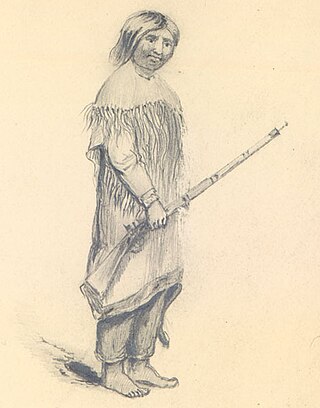
The Umpqua people are an umbrella group of several distinct tribal entities of Native Americans of the Umpqua Basin in present-day south central Oregon in the United States. The area south of Roseburg is now known as the Umpqua Valley.

Athabaskan is a large family of indigenous languages of North America, located in western North America in three areal language groups: Northern, Pacific Coast and Southern. Kari and Potter (2010:10) place the total territory of the 53 Athabaskan languages at 4,022,000 square kilometres (1,553,000 sq mi).
The Tututni tribe is a historic Native American tribe, one of Lower Rogue River Athabascan tribes from southwestern Oregon who signed the 1855 Coast Treaty, and were removed to the Siletz Indian Reservation in Oregon. They traditionally lived along the Rogue River and its tributaries, near the Pacific Coast between the Coquille River on the north and Chetco River in the south. Lower Rogue River Athabascan tribes are a group of Athabascan tribes who were historically located in southwestern Oregon in the United States and speak the same Athabascan language, known as Lower Rogue River.

The Dene people are an indigenous group of First Nations who inhabit the northern boreal and Arctic regions of Canada. The Dene speak Northern Athabaskan languages. Dene is the common Athabaskan word for "people". The term "Dene" has two uses:
The Siletz were the southernmost of several divisions of the Tillamook people speaking a distinct dialect; the other dialect-divisions were: Salmon River on the Salmon River, Nestucca on Little Nestucca River, Nestucca River and Nestucca Bay, Tillamook Bay on the Tillamook Bay and the mouths of the Kilchis, Wilson, Trask and Tillamook rivers, and Nehalem on Nehalem River. The name "Siletz" comes from the name of the Siletz River on which they live. The origin of the name is unknown
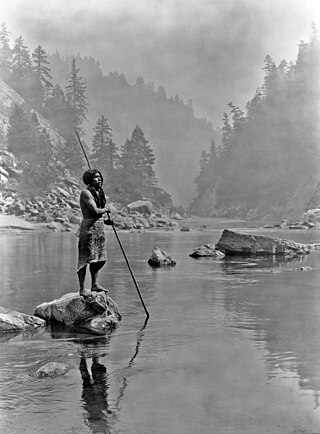
Hupa are a Native American people of the Athabaskan-speaking ethnolinguistic group in northwestern California. Their endonym is Natinixwe, also spelled Natinook-wa, meaning "People of the Place Where the Trails Return". The Karuk name was Kishákeevar / Kishakeevra. The majority of the tribe is enrolled in the federally recognized Hoopa Valley Tribe.
Chilula were a Pacific Coast Athabaskan tribe speaking a dialect similar to the Hupa to the east and Whilkut to the south, who inhabited the area on or near Lower Redwood Creek, in Northern California, some 500 to 600 years before contact with Europeans.
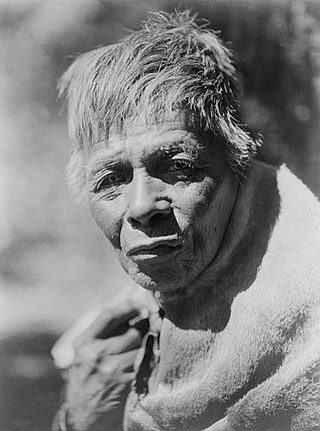
The Eel River Athapaskans include the Wailaki, Lassik, Nongatl, and Sinkyone (Sinkine) groups of Native Americans that traditionally live in present-day Mendocino, Trinity, and Humboldt counties on or near the Eel River and Van Duzen River of northwestern California.
The Tolowa language is a member of the Pacific Coast subgroup of the Athabaskan language family. Together with three other closely related languages it forms a distinctive Oregon Athabaskan cluster within the subgroup.
The Tolowa people or Taa-laa-wa Dee-ni’ are a Native American people of the Athabaskan-speaking ethno-linguistic group. Two rancherías still reside in their traditional territory in northwestern California. Those removed to the Siletz Reservation in Oregon are located there.
The Confederated Tribes of Siletz Indians in the United States is a federally recognized confederation of more than 27 Native American tribes and bands who once inhabited an extensive homeland of more than 20 million acres from northern California to southwest Washington and between the summit of the Cascades and the Pacific Ocean. After the Rogue River Wars, these tribes were removed to the Coast Indian Reservation, now known as the Siletz Reservation. The tribes spoke at least 11 distinct languages, including Tillamook, Shasta, Lower Chinook, Kalapuya, Takelma, Alsea-Yaquina, Siuslaw/Lower Umpqua, Coos, the Plateau Penutian languages Molala and Klickitat, and several related Oregon Athabaskan languages.
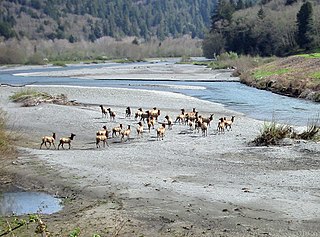
The Whilkut also known as "(Upper) Redwood Creek Indians" or "Mad River Indians" were a Pacific Coast Athabaskan tribe speaking a dialect similar to the Hupa to the northeast and Chilula to the north, who inhabited the area on or near the Upper Redwood Creek and along the Mad River except near its mouth, up to Iaqua Butte, and some settlement in Grouse Creek in the Trinity River drainage in Northwestern California, before contact with Europeans.

Rogue River Indians are a conglomeration of many tribal groups in the Rogue River Valley area, belonging to three language families: Athabascan, Takelma, and Shastan.

Mattole, or Mattole–Bear River, is an extinct Athabaskan language once spoken by the Mattole and Bear River peoples of northern California. It is one of the four languages belonging to the California Athabaskan cluster of the Pacific Coast Athabaskan languages. It was found in two locations: in the valley of the Mattole River, immediately south of Cape Mendocino on the coast of northwest California, and a distinct dialect on Bear River, about 10 miles to the north.

Wailaki, also known as Eel River, is an extinct Athabaskan language spoken by the people of the Round Valley Reservation of northern California, one of four languages belonging to the California Athabaskan cluster of the Pacific Coast Athabaskan languages. Dialect clusters reflect the four Wailaki-speaking peoples, the Sinkyone, Wailaki, Nongatl, and Lassik, of the Eel River confederation.
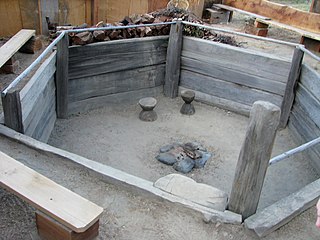
The Tsnungwe or Tsanunghwa are a Native American people indigenous to the modern areas of the lower South Fork Trinity River, Willow Creek, Salyer, Burnt Ranch and New River along the Trinity River in Trinity and Humboldt County in California. The Tsnungwe were a bilingual Hupa-Chimariko-speaking people and are known by the Hupa-speaking peoples as tse:ning-xwe. The primary language was the Tsnungwe dialect of Hupa, and the secondary language was Chimariko, although spoken with a Hupa accent.
Galice, or Galice-Applegate or Upper Rogue River, is an extinct Athabaskan language once spoken by the two Upper Rogue River Athabaskan tribes, the Galice tribe and Applegate tribe of southwestern Oregon. It was spoken on the "Galice Creek and Applegate River, tributaries of the Rogue River in southwestern Oregon. There were at least two distinct dialects the Galice Creek and Applegate, but only the Galice Creek dialect is well documented."
Tututni, also known as Upper Coquille, (Lower) Rogue River and Nuu-wee-ya, is an Athabaskan language once spoken by three Tututni tribes: Tututni tribe, Coquille tribe, and Chasta Costa tribe who are part of the Rogue River Indian peoples of southwestern Oregon. In 2006 students at Linfield College participated in a project to "revitalize the language." It is one of the four languages belonging to the Oregon Athabaskan cluster of the Pacific Coast Athabaskan languages.
References
- ↑ Spence, Justin (2013). Language Change, Contact, and Koineization in Pacific Coast Athabaskan. UC Berkeley.
- ↑ Hall, Jaeci Nel (2021). Indigenous Methodologies in Linguistics: A Case Study of Nuu-wee-ya' Language Revitalization (PDF). University of Oregon.